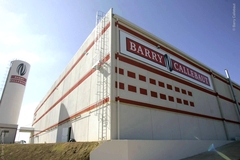Green energy and regenerative farming in sharp focus as ADM, Arla and PepsiCo ramp up sustainability
15 Sep 2022 --- As the energy crisis takes hold and the rapid onset of climate change shows no signs of abating, F&B giants are rallying on policies to restore the earth and reduce carbon emissions. Producing climate-friendly food is the future. Businesses realize that investing in regenerative farming practices will pay off now and in the years ahead as consumers demand even more from brands in terms of planet-friendly offerings.
A new wind farm deal in Denmark will mean Arla can reach 100% green electricity on farms and in production in Denmark by 2025, while ADM and PepsiCo join forces on carbon-friendly agricultural practices in a bid to reduce carbon intensity.
The 7.5-year collaboration concerns two million acres of US farmland and pledges that carbon cuts - estimated at 1.4 million metric tons of greenhouse gasses - will be seen from the farmgate to food and beverage products across ADM’s and PepsiCo’s portfolios.
Carbon-friendly farms for emissions goals
This partnership will focus on projects that will significantly expand regenerative agriculture across their shared North American supply chains while building farmers’ resilience to climate change.

Initially, corn, soy and wheat farmers across Kansas, Minnesota, Iowa, Illinois, Indiana and Nebraska will be involved in what the companies brand as “farmer-first” initiatives. These include regenerative agricultural practices like cover crops, reduced tillage, nutrient management, diverse rotations and responsible pesticide use.
Farmers will get technical and financial assistance and access to peer regenerative farming networks, and results will be tracked.
The project with ADM is by far PepsiCo’s most significant move in carbon cutting to date.
PepsiCo pegs the project as a “sea change” because it shows how, by partnering with the right companies, industry can move the needle on transforming food production systems and achieving ambitious carbon reduction goals.
 Arla says it aims to use 100% green electricity on dairies and in production in Europe by the end of 2025. Dairy production runs on wind, sun and biogas
Arla says it aims to use 100% green electricity on dairies and in production in Europe by the end of 2025. Dairy production runs on wind, sun and biogas
Meanwhile, dairy giant Arla will tap electricity from an unsubsidized wind farm in Jammerbugt Municipality, Denmark, which will deliver 137 GW/h electricity, as part of its deal with Eurowind Energy.
This follows Arla recently saying it aims to use 100% green electricity on dairies and in production in Europe by the end of 2025.
Company executives believe this decade-long wind farm collaboration will ensure it gets there in Denmark, at least.
”We are fully committed to reducing our climate footprint so that consumers can continue to enjoy our dairy products. We have therefore doubled our ambitions across our production and now have a target to reduce our CO2 emissions by 63% before 2030. Reaching our target of 100% green electricity in Denmark is a good step on the way,” says Hanne Søndergaard, sustainability director in Arla.
Throughout the 10-year agreement, the green energy from the turbines will save 58,000 tons of CO2 a year, corresponding to 8% of Arla’s total CO2 footprint for scope 1+2.
The reduction will build on Arla’s already reducing its CO2 emissions from production by 25% since 2015.
The new agreement regarding the wind farm Nørre Økse Sø is one of many initiatives which provide Arla’s dairy and production plants with green electricity. In addition to the 137 GW/h electricity, which the wind farm is expected to deliver, Arla also receives renewable energy from solar cells, biogas engines, and own units from several Arla farms throughout Denmark.
Electricity from renewable energy sources is part of Arla’s total climate target to reduce CO2 emissions from its production by 63% before 2030.
However, delivery of the new wind turbines is not expected until next year, and they will not become operational until 2024.
Will this be the largest vertical farm in the world? The project with ADM is by far PepsiCo’s most significant move in carbon cutting to date.
The project with ADM is by far PepsiCo’s most significant move in carbon cutting to date.
Meanwhile, Plenty Unlimited has secured up to 120 acres of land in Virginia, US, to build the world’s largest, most advanced indoor vertical farm campus, designed to bring fresh produce to the East coast year-round.
Plenty plans to deploy several large-scale vertical farms on the campus in the coming years, with a potential annual production capacity exceeding 20 million pounds across multiple crops, including strawberries, leafy greens and tomatoes.
The massive indoor farming platform allows farmers to grow a wide variety of crops with a fraction of the land and up to 350x more yield per acre than conventional farms. The hub will use advanced technology and customized approaches to farming.
The farm will grow Driscoll’s strawberries as part of a unique project to vertically farm berries at scale. The first crops are expected to be available in winter 2023-2024 at retailers throughout the Northeast of the US.
The Plenty Richmond Farm Campus will then expand over time to include farms growing other produce, such as Plenty’s signature pesticide-free leafy greens, using Plenty’s patented platform.
Plenty’s controlled indoor growing environments optimize produce for flavor, texture and size by tailoring nutrients, water and light to the needs of each plant.
By Gaynor Selby











